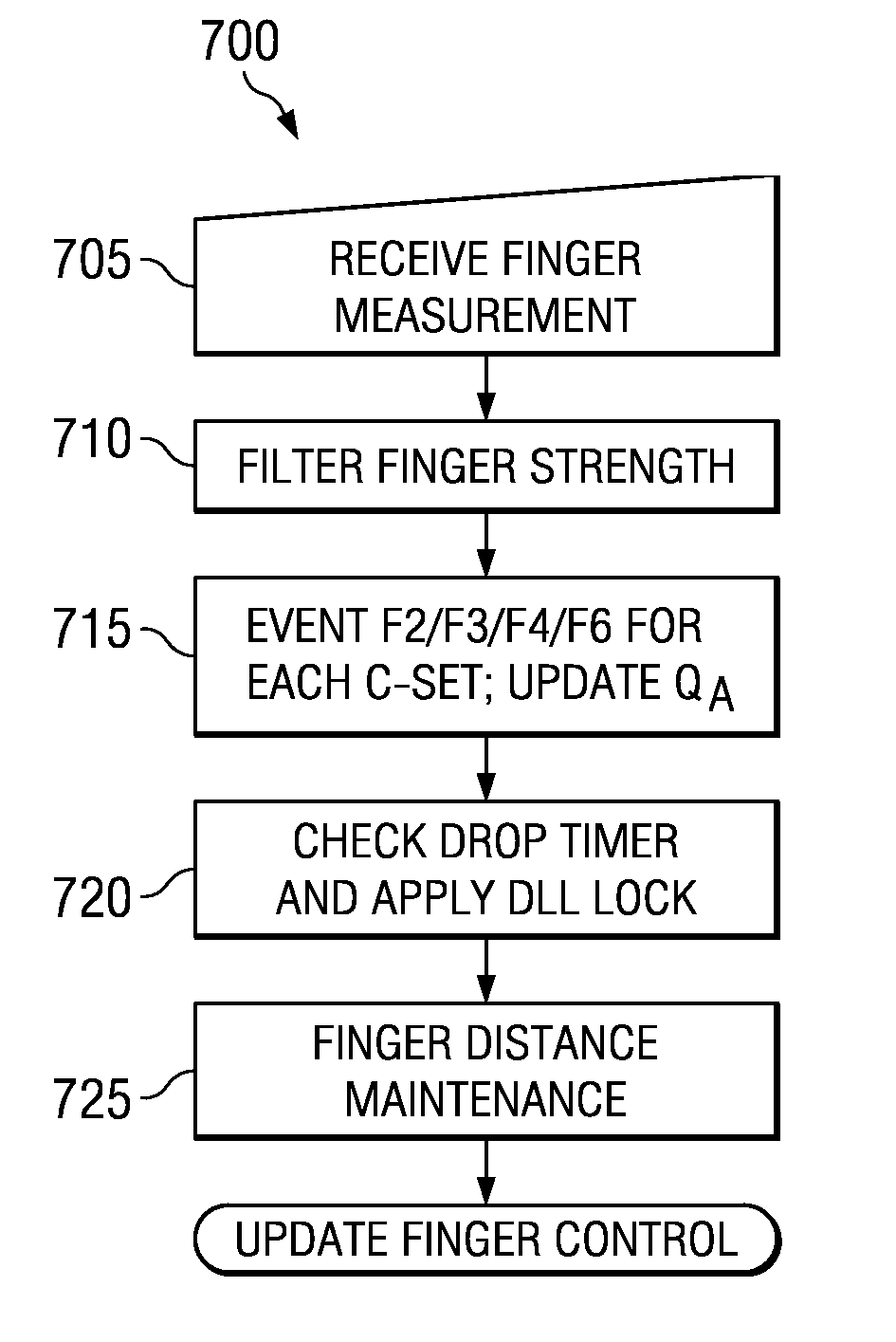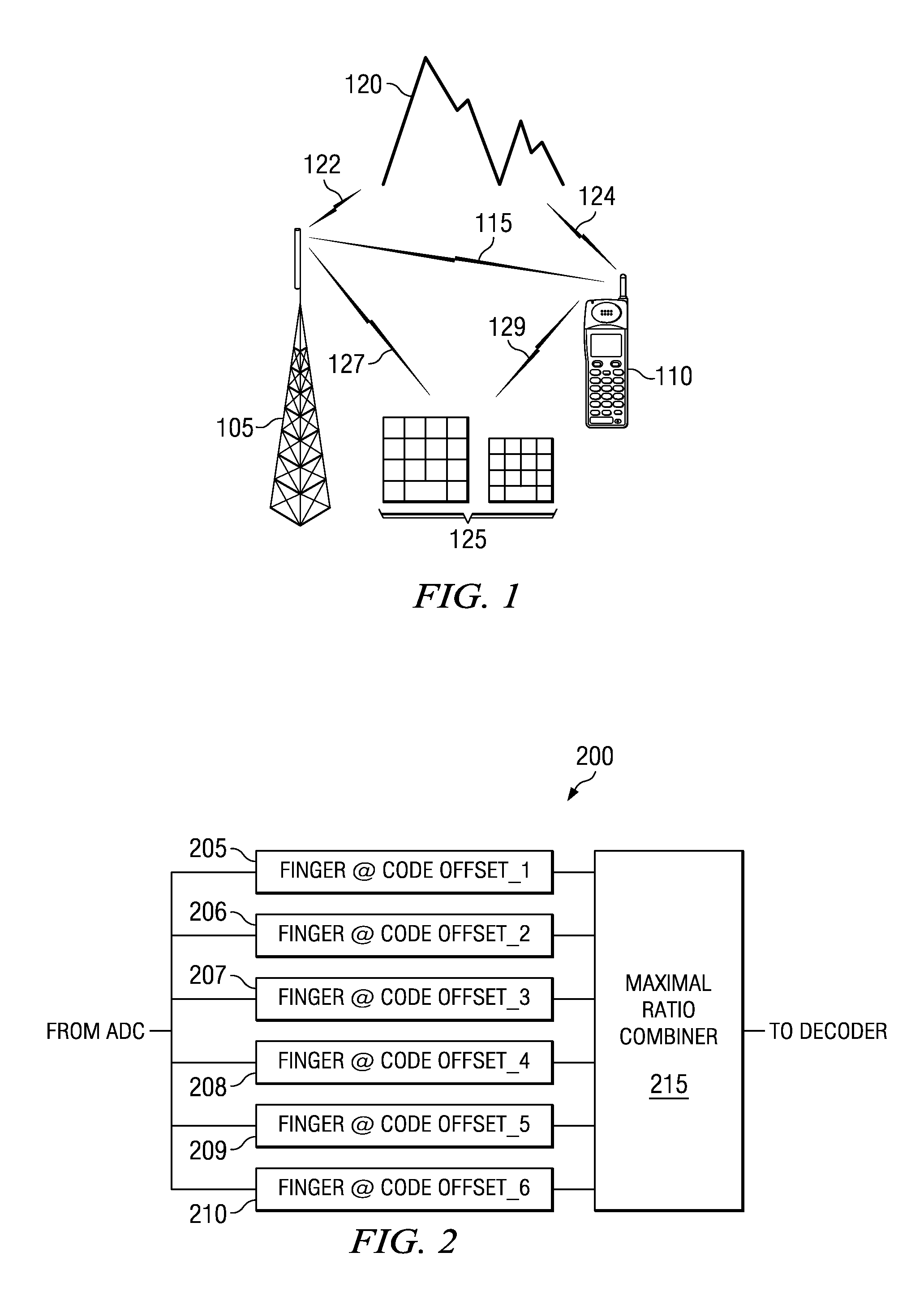System and method for finger and path management in receivers
a wireless communication and resource management technology, applied in the field of digital wireless communications, can solve the problems of limited resources, inability of the receiver to accurately decode the transmitted signal, and inability to achieve the effect of accurate decoding, less power, and less power
- Summary
- Abstract
- Description
- Claims
- Application Information
AI Technical Summary
Benefits of technology
Problems solved by technology
Method used
Image
Examples
Embodiment Construction
[0025]The making and using of the presently preferred embodiments are discussed in detail below. It should be appreciated, however, that the present invention provides many applicable inventive concepts that can be embodied in a wide variety of specific contexts. The specific embodiments discussed are merely illustrative of specific ways to make and use the invention, and do not limit the scope of the invention.
[0026]The present invention will be described with respect to preferred embodiments in a specific context, namely a code-division multiple access (CDMA) spread spectrum receiver, such as TIA / EIA-95 and CDMA2000 compliant systems. The TIA / EIA-95 technical standard is published in a document entitled “Mobile Station-Base Station Compatibility Standard for Wideband Spread Spectrum Cellular Systems (ANSI / TIA / EIA-95-B-99),” published Feb. 1, 1999, which is herein incorporated by reference. An overview of the CDMA2000 technical standard is provided in a document entitled “Introduct...
PUM
 Login to View More
Login to View More Abstract
Description
Claims
Application Information
 Login to View More
Login to View More - R&D
- Intellectual Property
- Life Sciences
- Materials
- Tech Scout
- Unparalleled Data Quality
- Higher Quality Content
- 60% Fewer Hallucinations
Browse by: Latest US Patents, China's latest patents, Technical Efficacy Thesaurus, Application Domain, Technology Topic, Popular Technical Reports.
© 2025 PatSnap. All rights reserved.Legal|Privacy policy|Modern Slavery Act Transparency Statement|Sitemap|About US| Contact US: help@patsnap.com



